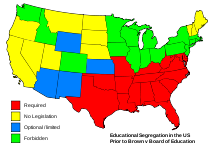I once again have to try and find something interesting to say about Pimlico.
- Actually 2 years older than the Kentucky Derby.
- Shortest in distance (1/16th shorter than the Derby).
- Only the Derby has a larger attendance.
- No Black Eyed Susan has ever been used, currently it’s painted Chysthanthemums.
There have been 34 winners of both the Kentucky Derby and Preakness Stakes including the 11 Triple Crown winners.
Winners don’t get the real Woodlawn Cup to keep, but a half size replica (oh, and the Woodlawn Racing Club is defunct). Black Eyed Susans don’t bloom until 2 months after the Preakness. The Old Clubhouse was destroyed in a fire in 1966. They paint the winner’s racing silks on the weathervane. No one on the internet knows why it’s called the Alibi Breakfast.
I need a drink-
| Black Eyed Susan Recipe (Official, but without the brand names) Ingredients:
Preparation: Fill a highball glass with shaved ice, add the liquors first, then top off with orange juice and sweet and sour mix. Stir and garnish with an orange slice, cherry, and stirrer. |
Post time 6:18 pm ET, coverage starts at 4:30 pm on NBC.
I once saw a future Miss America almost eaten by a horse.
Ok, so she wasn’t a Miss America, but she was one of the 10 finalists.
We were on this band trip (she played French Horn, was the practice Piano player for Choir, and sang- rather badly as I recall which is why she got stuck playing Piano) and we went to this ski resort in Pennsylvania where I and my room mates mostly amused ourselves by doing a lot of superficial “damage” like draping our underwear over the lamps and taking the mattresses off the beds (they wouldn’t let us on the bus for the trip home until we “fixed” it which took like a whole 5 minutes).
For me it was notable for this big scar I got while skiing (I’m quite good by the way) when this football player plowed into me at full tilt and opened up a remarkably large wound on my shin with his edge through a teeny tiny little hole in my jeans. Hardly even noticed it until my boot started filling up with blood.
So one of the other things you could do was horse riding which was a big thrill for me since I went to the boy’s camp with the lake and not the girl’s camp with the horses and the only other time I’d been on the back of one was this sad nag at the fair who was chained to a not very Merry-go-round and even though we didn’t get much past a stately amble at least we were going somewhere.
Future Miss America was two horses in front so I saw it all. It had started to snow a little, the path was getting slippery and her horse’s hoof went out and kicked the horse behind.
Who got a little ticked, climbed up on the back of her horse and started biting her.
Well, she went the emergency room, I got the aid station at the slope where the patrol person took a look and said- “That’s nothing, just a scratch. Are you sure you want a band aid?”
I dunno, does it have Spongebob on it?
Top Horse, From a Place Winners Aren’t Made
By JOE DRAPE, The New York Times
MAY 16, 2014
There is no bluegrass here or limestone fences framing postcard-ready landscapes. A drought has drained the San Joaquin Valley of any color other than beige. There is no mistaking the smell in the air, either: It is cow manure from the feedlot of California’s largest beef producer.
This is a working ranch, after all, where cows graze, almonds and pistachios grow on trees, and asparagus sprouts from the arid ground. The horses here are a sidelight, not sheikh-owned stallions that command $100,000 in the breeding shed. There is no harem of impeccably bred mares owned by the Wertheimers of the House of Chanel or any other of the sport’s boldface names.
…
Instead of relying on multigenerational horse families like the Phippses, owners of the 2013 Kentucky Derby winner, Orb, and deep-pocketed commercial breeders with their large band of broodmares, farms here use breeders like Coburn and Martin, who are equipped with one or two mares and the dream of creating a home-run horse. At first blush, California Chrome’s parents did not seem like champion stock. A time-honored racing maxim says, “breed the best to the best and hope for the best.” In this case, Coburn and Martin, with their limited budget, settled for “best available.”Coburn is employed by a Nevada company that makes magnetic tape for items like credit cards and hotel keys; Martin owns a California laboratory that tests safety equipment.
Derby Victor a Heavy, and Heavier, Preakness Favorite
By JOE DRAPE, The New York Times
MAY 14, 2014
California Chrome will break from the No. 3 post, well inside his two most formidable challengers. Bayern (10-1) is in the No. 5 hole and Social Inclusion (5-1) the No. 8. Both rely on early bursts and are likely to dictate the pace.
…
“He likes to run in the pocket; I don’t think you’ll see him far off the pace,” Sherman said of his colt. “If he can come out of there and be fourth going around the turn and fourth down the backside and have a clear path, you’re going to see old Chrome perform.”There are some promising horses among California Chrome’s nine challengers, but none of them have shown talent similar to that of Chrome. Only two horses that ran in the Derby are back for more: Ride on Curlin was a well-beaten seventh, and General a Rod finished 11th.
The new faces on the Triple Crown trail are far more interesting. Social Inclusion was unraced as a 2-year-old but won twice in Florida spectacularly, smashing the track record at Gulfstream for a mile-and-a-sixteenth in a 10-length rout of Honor Code, a graded stakes winner. In April, he finished third in the Wood Memorial.
…
The Bob Baffert-trained Bayern is still learning the racing game. He has won two of his four races but did not have enough qualifying points to make the Derby.“He has a lot of speed and is going to be up close,” Baffert said. “He’s ready for it now, and I feel good about him going in. If he’s good enough, he’s good enough.”
The Preakness Dartboard
By JOE DRAPE and MELISSA HOPPERT, The New York Times
MAY 16, 2014
Post time: 6:18 p.m. Eastern Television: NBC
Joe Drape’s picks (win, place, show): California Chrome, Ring Weekend, Kid Cruz
Melissa Hoppert’s picks (win, place, show): California Chrome, Social Inclusion, Bayern
Concerns Fade Over Weather and the Favorite’s Health
By JOE DRAPE, The New York Times
MAY 16, 2014
California Chrome galloped in the rain, took his medicine – a glycerin rinse for a small blister in his throat – and was declared fit, fast and ready for Saturday’s 139th running of the Preakness Stakes by his father-son training team.
…
Just as the commotion surrounding California Chrome’s cough blew over, so did the stormy weather that made for a dreary Friday morning. By late afternoon, the track was dry at Pimlico Race Course, and it was expected to be in fine condition for Saturday’s race.
No Stop at the Preakness for Two California Chrome Owners
By MELISSA HOPPERT, The New York Times
MAY 17, 2014
The Martins had booked their trip to Baltimore but canceled at the last minute to stay home in Yuba City, Calif. They own a laboratory in Sacramento that tests safety equipment like air bags and landing gear, and, the Coburns said, the Martins have fallen behind in their work because of California Chrome’s success.
…
Carolyn Coburn also said their co-owners did not have a pleasant experience with the organizers at Churchill Downs. The Martins picked up Perry’s 83-year-old mother, Katherine, from a nursing facility in Michigan and drove her to Louisville for the Derby.“Churchill did not go out of their way to get her to where she needed to be and to assist us,” Carolyn Coburn said of Katherine Martin, who was in a wheelchair. “Steve and Perry did everything, got her in her seat, then we had to get her to the rail so she could watch the race, then get her to the winner’s circle.”
A Long-Shared Love of Racing and a Champion
By MELISSA HOPPERT, The New York Times
MAY 17, 2014
The Coburns and the Martins owned shares of California Chrome’s mother, Love the Chase, through a syndicate and then bought her outright. They raced her two more times, but it was clear that she was not a runner after she won only once in six tries, and retired her so she could become a broodmare. She was bred to Lucky Pulpit for $2,000, and the rest is racing history.
“Our first check that we got with her, she ran fourth, her first race, was $46, and we had invested $4,000, plus the monthly fees,” Carolyn said. “But Steve said, ‘No she’s going to do something.’ And being a mother was what she did.”
The Coburns spoil their horses – Love the Chase, California Chrome, a yearling and a suckling, both full sisters to Chrome – as much as they do their eight grandchildren. When Love the Chase was racing, she refused to eat carrots. So they scoured livestock stores for a treat she might eat. They found Mrs. Pastures cookies for horses, and she ate them up. Now her offspring cannot get enough, especially California Chrome.
“He runs for those cookies,” Steve said. “We buy those things by the buckets full, and we take them over to Harris Ranch, got every horse over there hooked on them.”

 The obligatory-
The obligatory-


 Welcome to the
Welcome to the 
